Nyheter
Insolvency Issues, Bitcoin Wholecoiners Surge, and More!
Publicerad
2 år sedanden
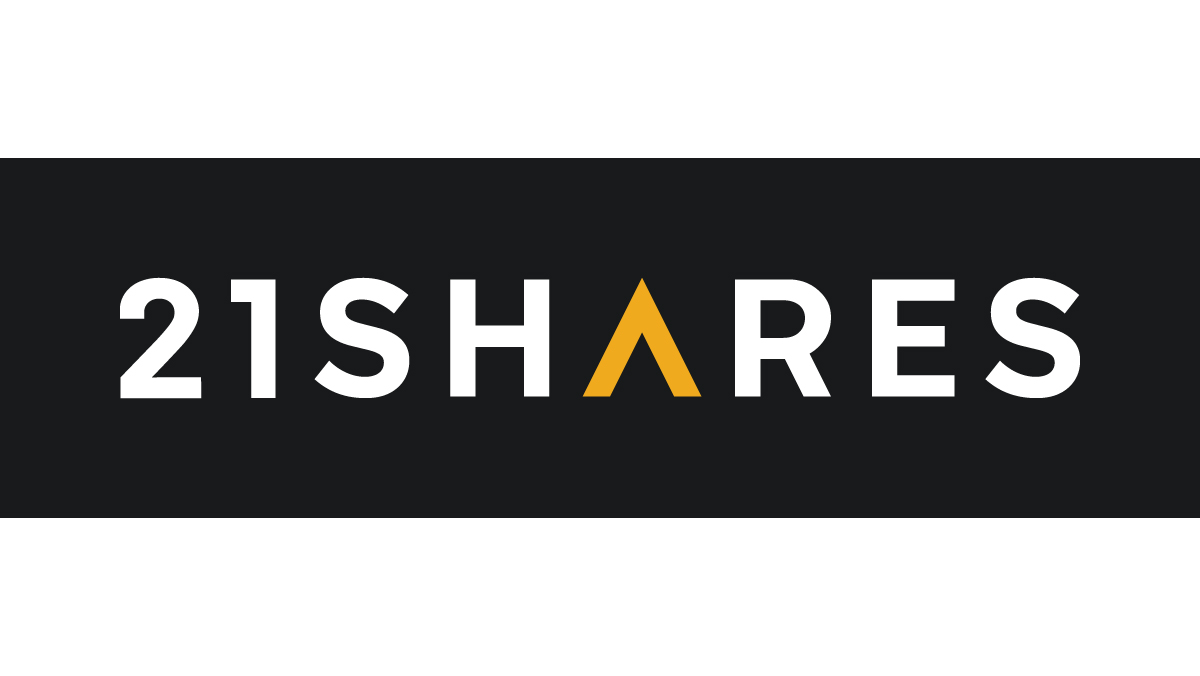
Soaring inflation and insolvency in some projects on DeFi sent Bitcoin briefly dipping below $18K over the weekend and Ethereum below $900. Jumping back to above the $20K and $1000 marks boosted some confidence in the market, with more than 13K wallets most likely “buying the dip” in the past week.
Figure 1: The Increase of Wallet Addresses Holding 1 BTC or More
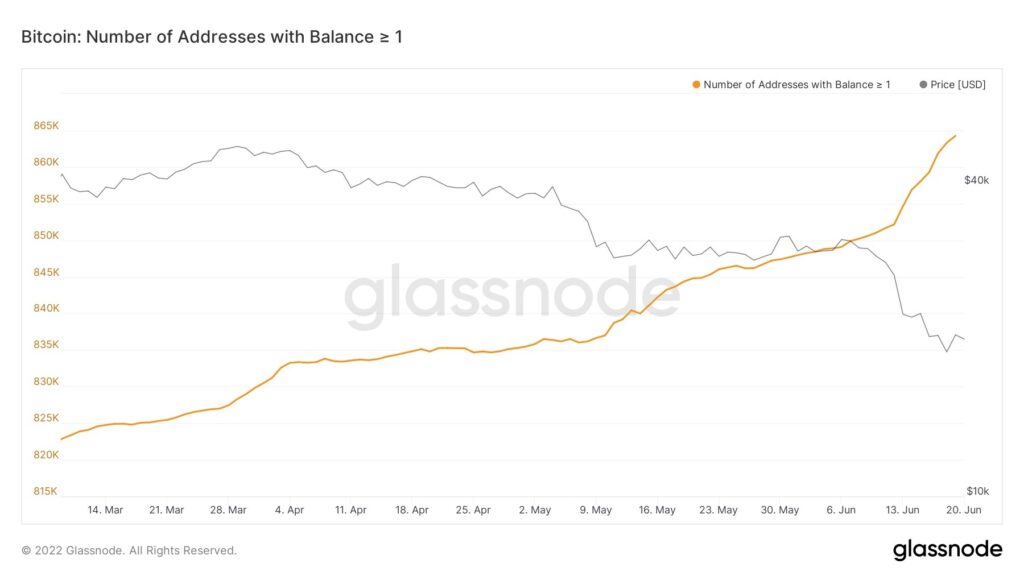
Source: Glassnode
US President Joe Biden blamed the waging financial crisis on the fact that nine foreign-owned shipping companies have been raising prices since the pandemic, making profits seven times higher than the year before. On June 15, the Federal Reserve raised interest rates by 75 basis points; the biggest rate hike in 28 years. A day after, Biden signed the “Ocean Shipping Reform Act of 2022” to crack down on industry fees and reduce inflation, at least marginally.
Key Takeaways
• Celsius is under investigation in some US states
• Positive signals for Bitcoin’s correction
• Circle unveils euro-backed stablecoin
• The metaverse may generate up to $5T by 2030
• Ethereum delays difficulty bomb, a stepping stone to the Merge
Macro, Regulations; Spot, and Derivatives Markets
Illicit crypto activities between 2021 and the first quarter of 2022 have dropped from 0.6% to 0.1%, according to data gathered by a blockchain forensics company powered by Mastercard. CipherTrace estimates that in 2020, illicit activity was between 0.62% and 0.65% of overall crypto activity, and it has now fallen to between 0.10% and 0.15% of overall activity in 2021.
Regulators in the US were also quite active last week, running investigations and taking crypto companies to court. Here’s what happened:
• The Securities and Exchanges Commission (SEC) is reportedly investigating how major crypto exchanges are working to prevent insider trading on exchanges.
• Elon Musk, SpaceX, and Tesla were sued for an alleged Ponzi scheme to loot $258B in Dogecoin. The plaintiff is a Dogecoin investor seeking a class-action lawsuit in the Southern District of New York against Musk and his companies for at least $86B in damages.
• Texas, Alabama, and New Jersey are investigating Celsius Network’s decision to halt customer withdrawals, signalling the lending protocol’s probable insolvency.
On-chain Indicators
Figure 2: BTC Shewhart Chart – MA 30 Implied Volatility
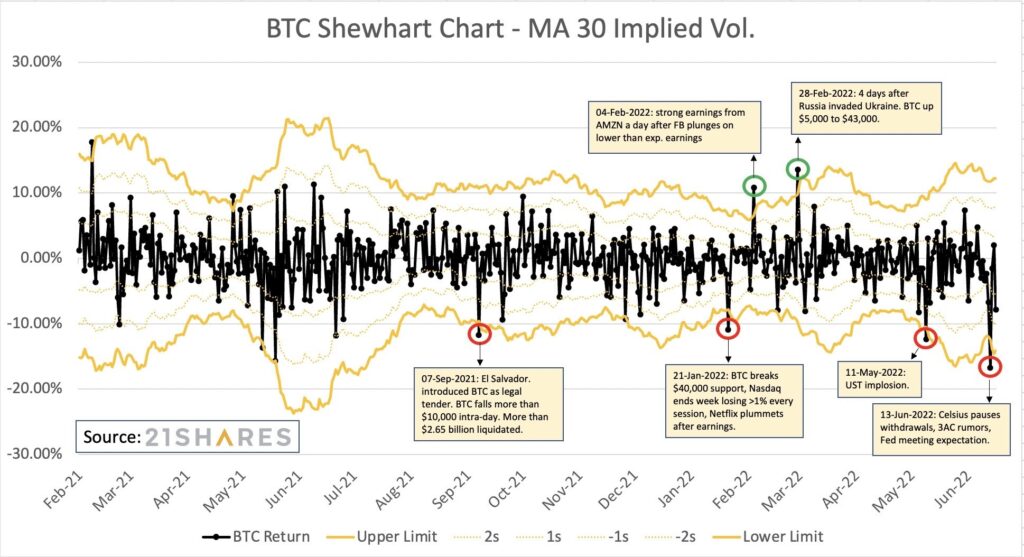
Source: 21Shares
With lots of fear, uncertainty, and doubt going on about the dramatic downside of Bitcoin, our team put together a simple analysis using implied volatility (DVOL) and realized volatility to estimate the movement of BTC for the next 24 hours.
The incentive here is using the max DVOL level during major risk events in the last several weeks to estimate the probability of different movement levels. As tail risk is hard to quantify to the price level, this could give us some guidance on the movement.
Figure 3: Bitcoin’s Market Value to Realized Value Ratio
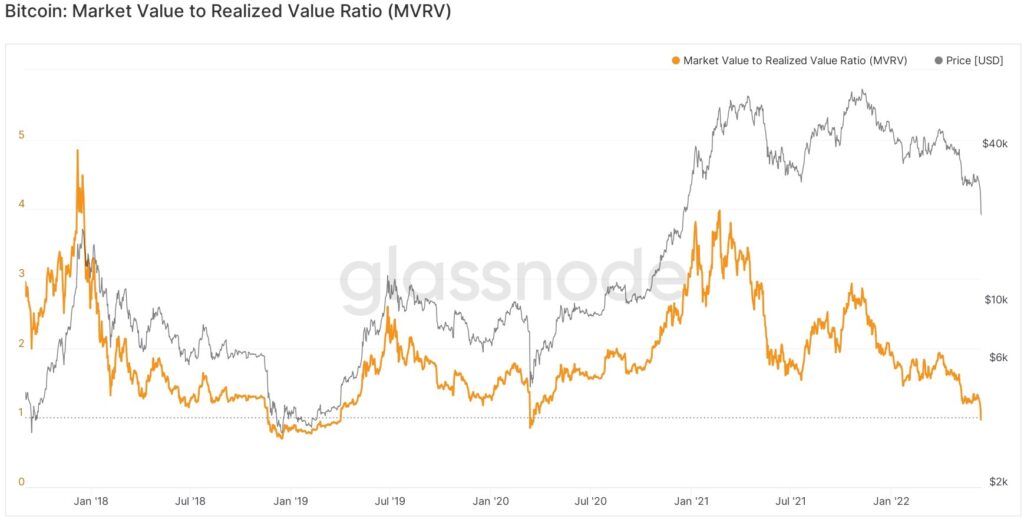
Source: Glassnode
As shown in Figure 3, the Market Value to Realized Value Ratio (MVRV) suggests that while Bitcoin may still experience price drops, it is more likely that the worst has passed. Over the past four years, Bitcoin’s MVRV ratio was above 1, with the exception of March 2020 when the MVRV ratio was 0.85 for seven days, in addition to the period between 2018 to 2019 which saw the MVRV ratio stay at 0.69 for 133 days. As shown, the current MVRV stands at 0.97.
DeFi
The Ethereum network will be undergoing an upgrade, dubbed the Gray Glacier, at block 15,050,000, which is expected to occur around June 29. The Gray Glacier will change the parameters of the Ice Age/Difficulty Bomb, pushing it back by 700,000 blocks, or roughly 100 days. More developments on the Ethereum ecosystem in the past week include:
• Former New York Stock Exchange president joined Uniswap Labs as an advisor.
• Inverse Finance suffered from a flash loan attack with $1.2M loss.
• Maker temporarily disabled Aave’s DAI Direct Deposit Module due to Celsius’ liquidity crisis.
• Bancor pauses Impermanent Loss Protection, to “give room for the protocol to breathe and recover.”
• Lido introduces dual governance, fearing Ethereum’s centralization after the Merge.
On the stablecoin hemisphere, Circle introduced an ERC-20 euro-backed stablecoin, EUROC. The Euro Coin will be backed by euro-denominated reserves held by regulated financial institutions in the US. The Euro Coin will be joining EURt, issued by Circle’s rival, Tether, which aims to decrease commercial paper backing of USDT to zero without any incurrences of losses. “All commercial papers are expiring and will be rolled into US Treasuries with a short maturity,” Tether’s announcement reads. Moreover, Tron DAO received 500M USDC to back its algorithmic stablecoin, USDD, which started to lose its peg to the dollar on June 13.
In a DeFi’s first, a lending protocol built on the Solana blockchain named Solend tried to gain control of a “whale” account which it said was putting the protocol at risk. Solend passed a proposal granting it emergency powers to take over the whale account, which had deposited 5.7M SOL tokens into Solend, accounting for more than 95% of deposits. Against that, the account was borrowing $108M in USDC and ETH. The measure would allow Solend to liquidate the whale’s assets via “over-the-counter” transactions — as opposed to on-exchanges trades — to avoid a possible cascade of liquidations. After a backlash on Twitter, questioning Solend’s decentralization, the lending protocol asked its users to vote on a new proposal to overturn the earlier vote, 99.8% voted yes.
NFTs, Metaverse, and DAOs
Amid the market crash, the top 8 NFT collections recorded at least 115% in the 24-hour trading volume. In a recent report, Mckinsey and Company predicted that the metaverse could reach $5 trillion by 2030.
In terms of developments on the metaverse, this is what we’ve seen last week:
• Merit Circle buys out the seed fund from YGG with $1.75M.
• Opensea is migrating to Seaport, which can reduce gascostst by 35%.
• IOTA announced the establishment of a DAO, with a community treasury of about $18.5M.
Hong Kong has emerged to be one of the popular regions for institutions including Meta and Yahoo to test out metaverse experiences. The potential catalyst is Animoca Brand, the mother company of the largest metaverse project Sandbox, which is incorporated in Hong Kong. We have seen many companies in Hong Kong entering Sandbox such as HSBC, Standard Chartered, SCMP, MTR, PCCW, among others.
More corporate NFT adoption include:
• YSL Beauty will launch social tokens and NFTs.
• Swiss luxury watchmaker TAG Heuer introduced an NFT-enabled smartwatch.
• Lacoste will launch an NFT collection.
Crypto Infrastructure
In the realm of crypto infrastructure layers, the L1 BNB Beacon Chain announced it’s going open-source, allowing developers to build on it. The network will also open its validator set, inviting external parties to become validators and play an important role in governance. Users interested in contributing as delegators will also have an avenue to contribute through staking. As the BNB Beacon Chain is rolled out, different components will be reviewed to identify opportunities for more prospective validators and delegators to contribute and play an active role.
The L2 zkSync will have a major version 2 update on testnet, featuring “forward-looking structural changes that necessitate a regenesis.” Immutable X is also launching Arch version 1.0, an NFT bridging protocol between L1 Ethereum and L2 StarkNet. Immutable is also launching a $500M fund to accelerate the adoption of Web 3 games and projects.
After a $400M liquidation by top-tier lenders on crypto trading and venture capital firm, Three Arrows Capital (3AC), it is speculated that 3AC is the next in line to be facing insolvency issues. With BlockFi and Deribit in its portfolio, 3AC has hired legal and financial advisers to help reclaim its position with lenders and other parties.
Moonbeam, a major destination for multi-chain applications on Polkadot, has integrated Chainlink Price Feeds into its smart contract platform. The availability of Chainlink’s price feeds helps enable builders to reliably source aggregated price information from many exchanges, helping ensure price accuracy. With the integration, developers can build even more sophisticated dApps to launch on the Moonbeam network.
One story we’re following in the realm of data storage is Filecoin Green’s $1 million grants program. It aims to support Regenerative Finance (ReFi) projects aiming to bring the economic system into a healthier alignment with the natural world.
Weekly Returns
The returns of the top five cryptoassets over the last week were as follows — BTC (-1.14%), ETH (-0.07%), BNB (-0.03%), ADA (0.02%), XRP (0.003%)
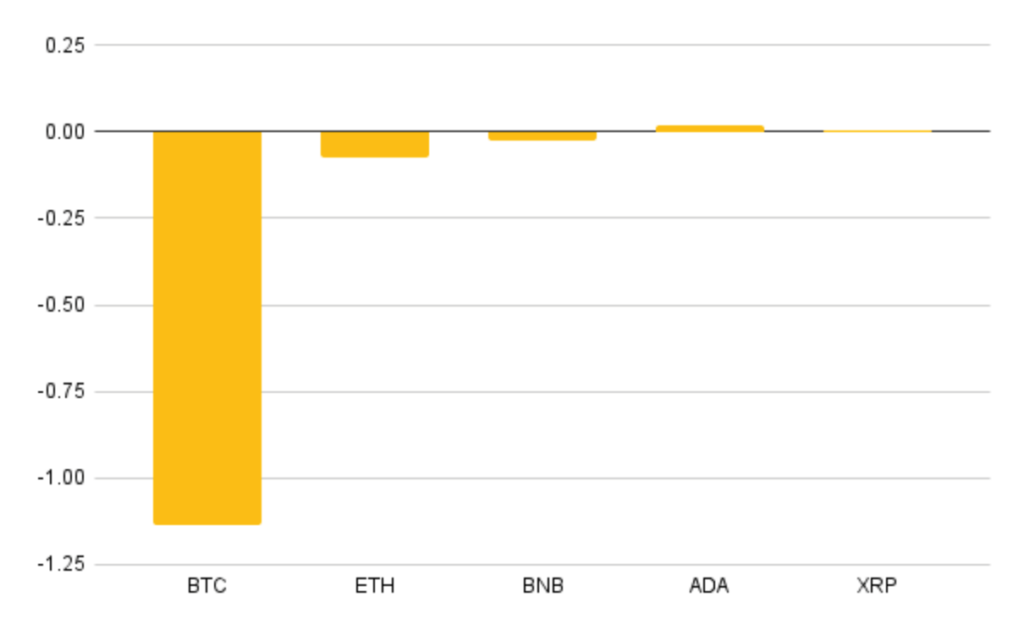
Media Coverage
Ophelia Snyder was featured in Financial Times to quote her for some of her contributions on stage as a part of her participation in the ETF Conference. “Ophelia Snyder, co-founder and president of 21 Shares, the Swiss-based crypto funds group, believes acceptance of digital assets has already come a long way,” the article reads. Our newsletter has also been published on the MorningStar.
Our very own Tom Wan was featured on the Amun Podcast with Crian Padayachee to discuss the Terra Luna debacle. You can listen to the episode here.
News
Iran Pulls the Plug on Bitcoin Miners this Week
What happened?
On the crypto mining front, 118 authorized cryptocurrency mining units in Iran will have to cut off their electricity supply from the national grid as of Wednesday, June 22. This is due to reaching a record of 62,500 megawatts during peak consumption, and it is expected that this week’s consumption will exceed 63,000 megawatts.
Why does it matter?
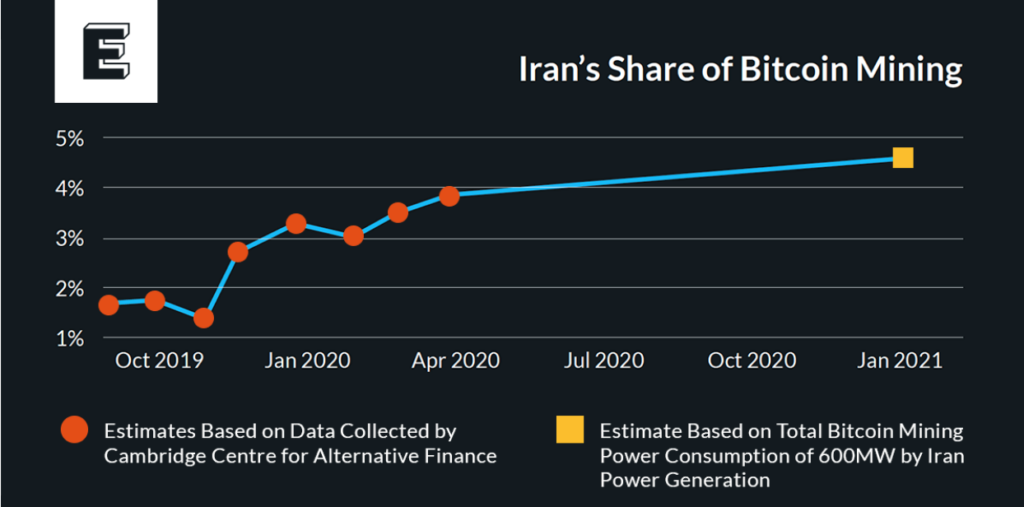
In December it was reported that Iran accounts for 4.5-7% of the global Bitcoin hashrate. Iran regulators officially recognized the crypto mining industry and began issuing licenses to miners, which are required to pay higher electricity rates and sell their mined Bitcoins to Iran’s central bank. However, the power infrastructure of the country couldn’t take it due to global warming.
In the coming months, we might see miners migrating to countries with abundant electric power resources, such as India, especially since the prices of new and used GPUs dropped in parallel with Bitcoin’s price developments over the past week.
Research Newsletter
Each week the 21Shares Research team will publish our data-driven insights into the crypto asset world through this newsletter. Please direct any comments, questions, and words of feedback to research@21shares.com
Disclaimer
The information provided does not constitute a prospectus or other offering material and does not contain or constitute an offer to sell or a solicitation of any offer to buy securities in any jurisdiction. Some of the information published herein may contain forward-looking statements. Readers are cautioned that any such forward-looking statements are not guarantees of future performance and involve risks and uncertainties and that actual results may differ materially from those in the forward-looking statements as a result of various factors. The information contained herein may not be considered as economic, legal, tax or other advice and users are cautioned to base investment decisions or other decisions solely on the content hereof.
Du kanske gillar
-
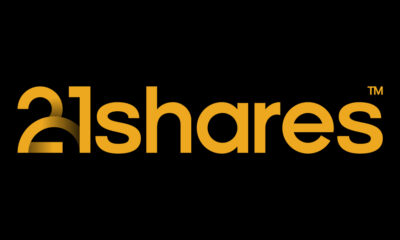

Navigating Macro Headwinds, On-Chain Optics, and The Rise of Runes
-
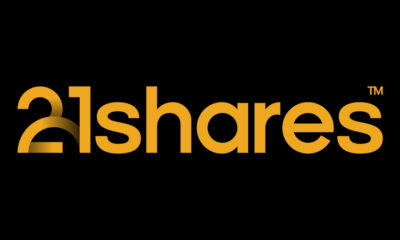

The Bitcoin Halving and Beyond
-


issuance.swiss erbjuder Figment-produkter på Ethereum och Solana med insatsbelöningar
-


Valour Short Bitcoin (SBTC) för den som tror att Bitcoin skall gå ned
-
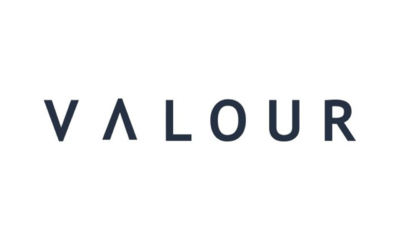

Valour lanserar den första Short Spot Bitcoin ETP i Norden
-
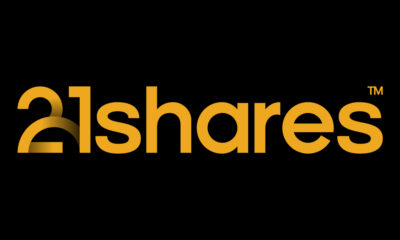

Geopolitical Conflict on the Rise, while Ethereum Receives its Biggest Boost
Nyheter
Tillgång till italienska statsobligationer med fast löptid
Publicerad
10 timmar sedanden
24 april, 2024
Sedan i onsdags har två nya börshandlade fonder utgivna av iShares kunnat handlas på Xetra och Börse Frankfurt. Dessa börshandlade fonder ger tillgång till italienska statsobligationer med fast löptid.
De två iShares iBonds dec 2026 och iShares iBonds dec 2028 Term € Italy Govt Bond UCITS ETFer ger investerare tillgång till en portfölj av eurodenominerade italienska statsobligationer som förfaller under samma kalenderår som ETFernas förfallodatum. Förfallodagen är satt till slutet av 2026 eller 2028. Vid löptidens slut likvideras den börshandlade fonden och portföljvärdet betalas ut till andelsägarna.
| Namn | ISIN | Avgift % | Utdelnings-policy | Referens- index |
| iShares iBonds Dec 2026 Term € Italy Govt Bond UCITS ETF (EUR) Dist) (26TP) | IE000LZ7BZW8 | 0,12 % | Utdelning | ICE 2026 Maturity Italy UCITS Index |
| iShares iBonds Dec 2028 Term € Italy Govt Bond UCITS ETF (EUR) Dist) (28IY) | IE000Q2EQ5K8 | 0,12 % | Utdelning | ICE 2028 Maturity Italy UCITS Index |
Produktutbudet i Deutsche Börses XTF-segment omfattar för närvarande totalt 2 156 ETFer. Med detta urval och en genomsnittlig månatlig handelsvolym på cirka 14 miljarder euro är Xetra den ledande handelsplatsen för ETFer i Europa.
Nyheter
Navigating Macro Headwinds, On-Chain Optics, and The Rise of Runes
Publicerad
11 timmar sedanden
24 april, 2024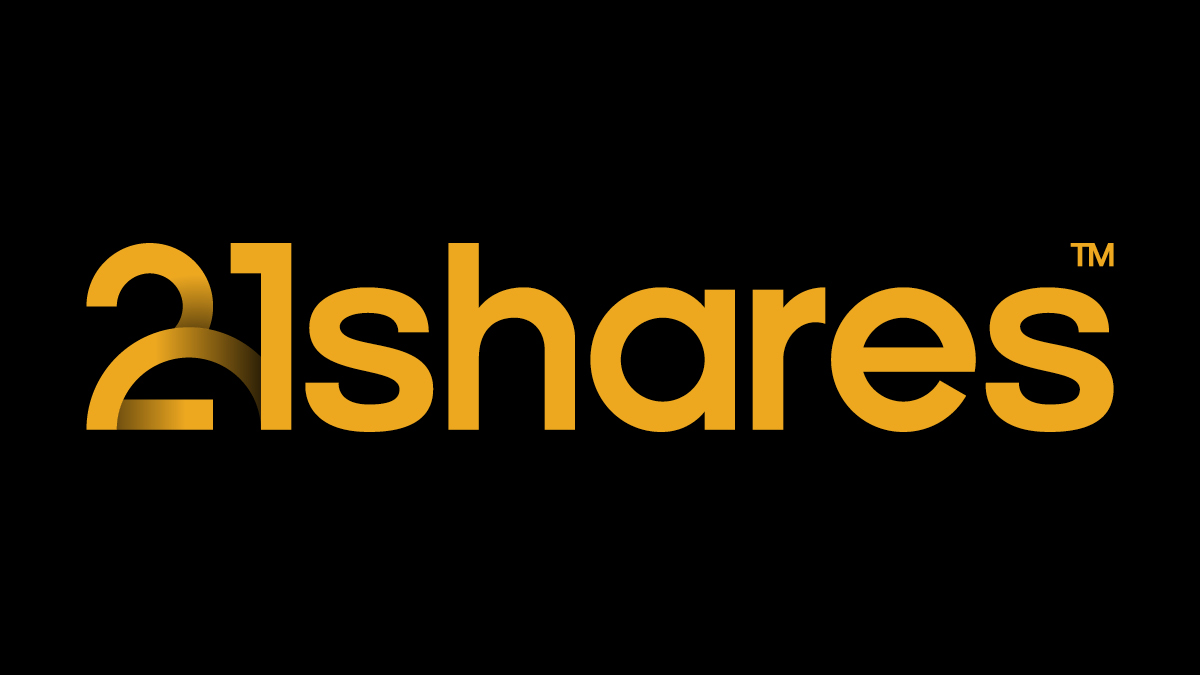
• Bitcoin Weathers Macroeconomic Storm
• Heightened User Activity, Soaring Transaction Fees, While Miners Sell Less
• Runes Protocol and Bitcoin’s Ever-Growing Ecosystem
Navigating Macro Headwinds, On-Chain Optics, and The Rise of Runes
This newsletter will be a Bitcoin-centric edition as we dissect the impact of recent macroeconomic events on Bitcoin’s price, followed up with an on-chain analysis of the network’s behavior post-halving. Additionally, we’ll explore some of the exciting innovations emerging within the Bitcoin ecosystem that were timed following the latest halving.
Bitcoin Weathers Macroeconomic Storm
The past two weeks have presented a challenging market environment for the crypto industry. As mentioned in our last newsletter, rising inflation in the U.S. remains, as evidenced by the higher-than-expected CPI print on April 9. Additionally, escalating conflict in the Middle East poses a significant threat to regional stability and added stress on the U.S. The potential of wider involvement from additional militant groups such as Lebanon’s Hezbollah, coupled with Iran’s control of a crucial maritime passage for commodity trading, the Strait of Hormuz, raise concerns about potential energy price hikes, steepening inflationary pressures and their effect on various asset classes.
Bitcoin initially reacted negatively to these events, experiencing an 8.22% drop in the immediate aftermath. Despite the 24/7 nature of crypto markets, which could have amplified the initial price shocks, Bitcoin’s underlying resilience shines through upon closer inspection. The S&P 500 fell by 2.03% on the market reopening last Monday and continues to tumble, while Bitcoin has recovered over 3.28% since the drawdowns, evidenced in Figure 1. This suggests a potentially more robust response to geopolitical turmoil compared to traditional assets, which is unsurprising given Bitcoin’s narrative as a flight to safety.
Figure 1: Bitcoin vs. Gold Price Performance Amid Geopolitical Tension
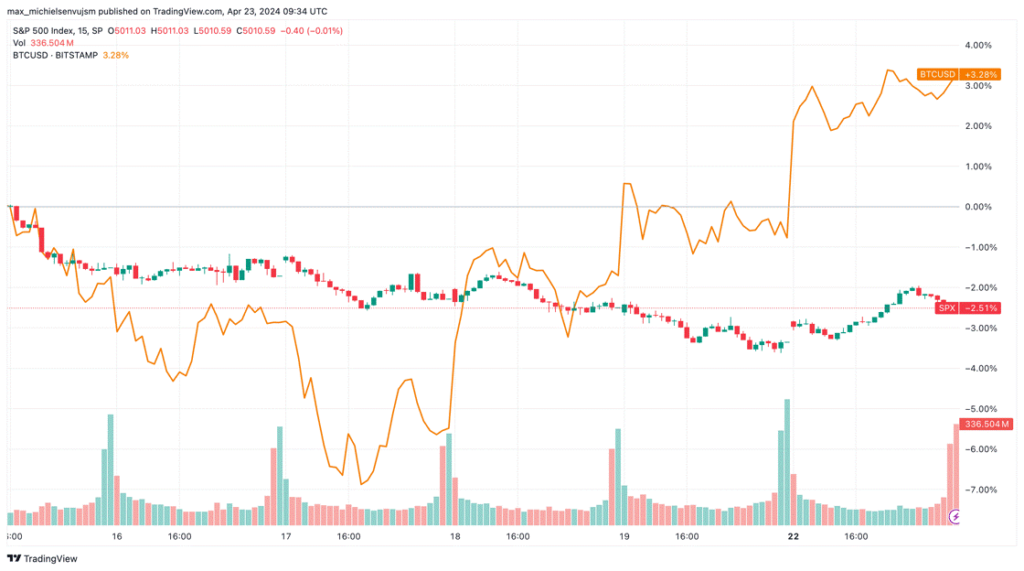
Source: TradingView
Examining Bitcoin’s market data, we see clear evidence that the futures market played a significant role in the initial price drops, which were attributed to the macroeconomic events of the last few weeks. A significant spike in long liquidations on the day of the attack, at $168M, suggests that some leveraged traders exited their positions, as shown below in Figure 2. Additionally, the high open interest at $35B leading up to the CPI print was followed by a recent $5B cool-off, indicating a correction in the futures market, reflected in the consolidation of the Bitcoin price.
Figure 2: Bitcoin Futures Long Liquidations, Short-Term and Long-Term Holder Supply
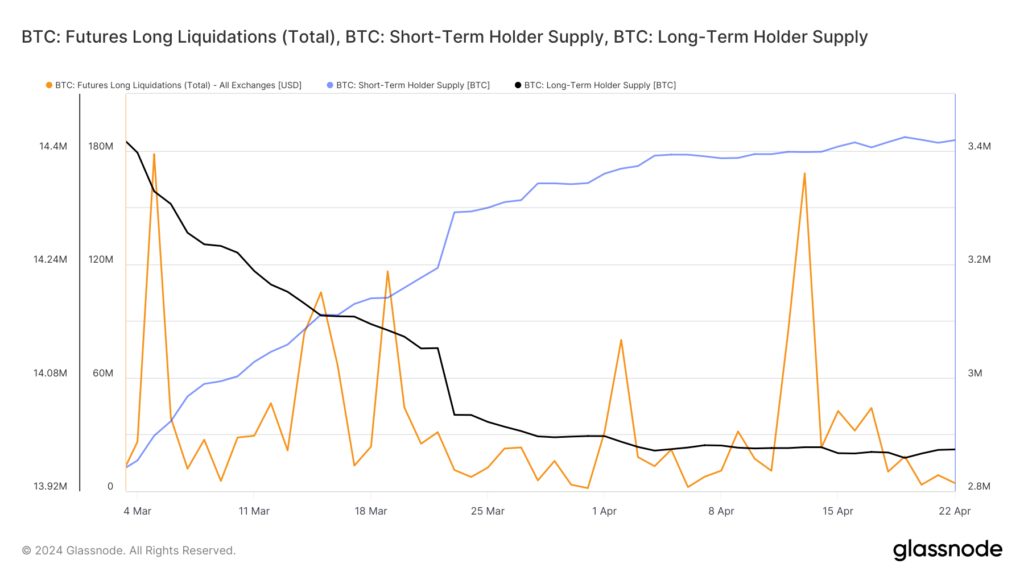
Source: Glassnode
Importantly, the spot market paints a more optimistic picture. In the last 10 days, which includes last week’s turbulence, long-term holders displayed minimal selling activity. Their holdings decreased by only 0.05%, while short-term holders continued to accumulate BTC, increasing their holdings by 0.5%. Notably, “Accumulation Addresses,” characterized by having no outbound transactions, holding more than 10 BTC, and not being affiliated with centralized exchanges or miners, have capitalized on the recent market dip. They currently hold over 3.17M BTC, accumulating over $2.3B since the CPI print, as evidenced below by Figure 3.
Figure 3 – Total Balance in Accumulation Addresses
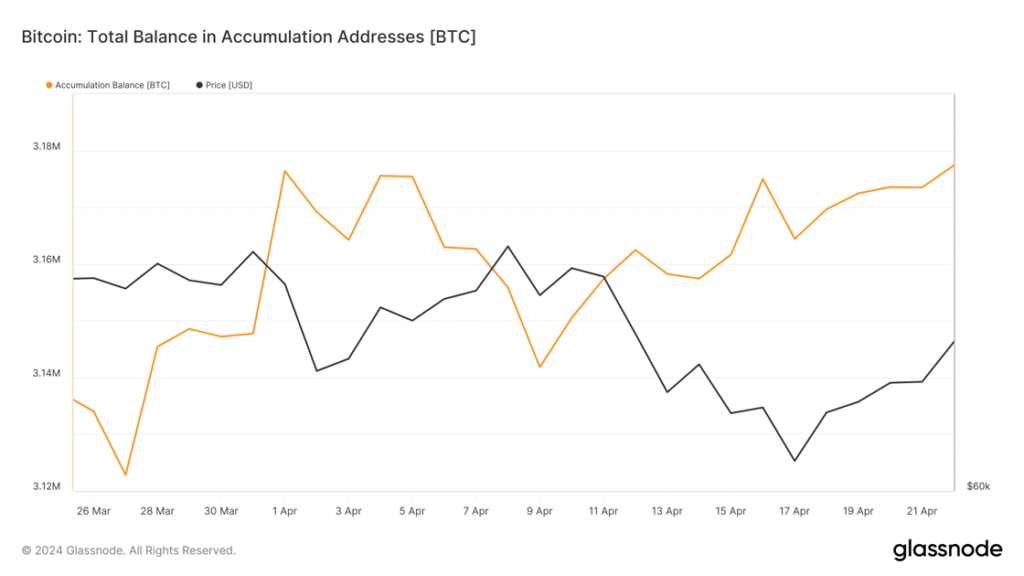
Source: Glassnode
Further bolstering the positive outlook, the 90-day due diligence period for U.S. spot Bitcoin ETFs has now concluded. According to Bloomberg, over 100 fund managers have disclosed their ownership of these products, signifying the growing institutional appetite for Bitcoin exposure, adding another layer of support to the asset class.
Heightened Activity, Soaring Transaction Fees, While Miners Sell Less
In the world of Bitcoin, transactions get logged onto a whiteboard-like structure, divided into cells called “blockspace,” where each cell represents a limited amount of space. Transaction fees play a crucial role in managing limited block space on the Bitcoin network. Users who pay higher fees get their transactions prioritized for confirmation within these blocks. This ensures smoother operation by preventing congestion and disincentivizing low-value spam transactions. Additionally, transaction fees serve as an important security measure. They incentivize miners to dedicate significant computing power to validate transactions and secure the network. Without these fees, mining might become less profitable, potentially jeopardizing network security.
Finally, transaction fees are at the core of Bitcoin’s economic sustainability as the mining reward gets halved every 210,000 blocks, transaction fees step up to fill the gap and pump miners’ revenue. We can already see the early innings of transaction fees rising against the issuance or block rewards since the launch of Ordinals in 2023, as shown in the chart below.
Figure 4 – Bitcoin Miners Revenue Breakdown
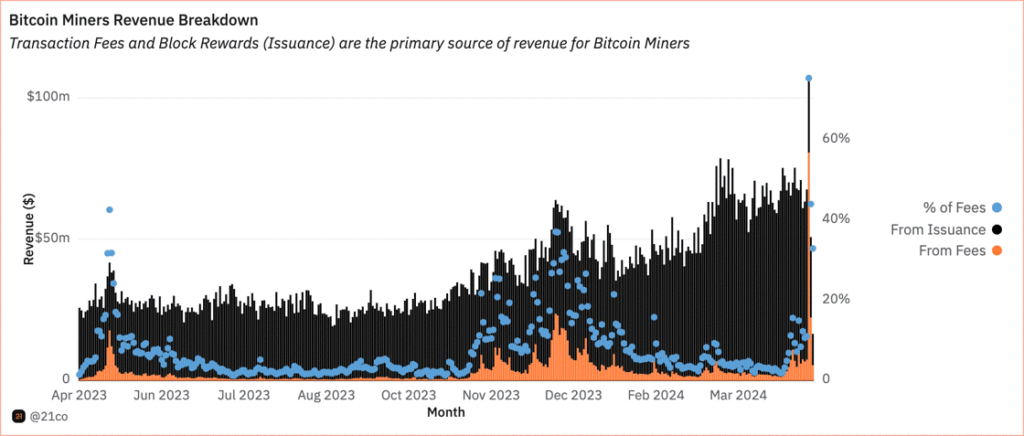
Source: 21co on Dune
It is no surprise that Bitcoin network activity has been high this year, with the amount of active addresses hovering between 700K and 1 million since January, up until the halving event. On-chain data reveals a lower-than-expected drop in active addresses following the halving, with transaction fees reaching new highs. While active addresses did experience a significant drop (43%) on April 19, falling from over 893K to 500K, they have already recovered 70K since then. Historically, the halving typically leads to a smaller decrease in active addresses (3-9%). This larger drop could indicate that rising fees are pricing some users out of the market for now, but as we’ll cover later, there are certain solutions being worked on to help alleviate this issue.
That said, transaction fees soared up to $128 on April 20, breaking $78M, tripling the previous all-time high, and making up 75% of Bitcoin miner revenue, as shown in Figure 4. The spike was primarily due to Ordinal-like inscriptions which have recently seen a spike thanks to Runes protocol, which we’ll delve deeper into in the last section. In line with this, the burgeoning Bitcoin ecosystem, expedited by Rune, has not only pushed Bitcoin out of its comfort zone unlocking new use cases, but also its transaction fees to surpass Ethereum’s since May 2023, as seen in Figure 5.
Figure 5 – BTC vs ETH fees (2 Years)
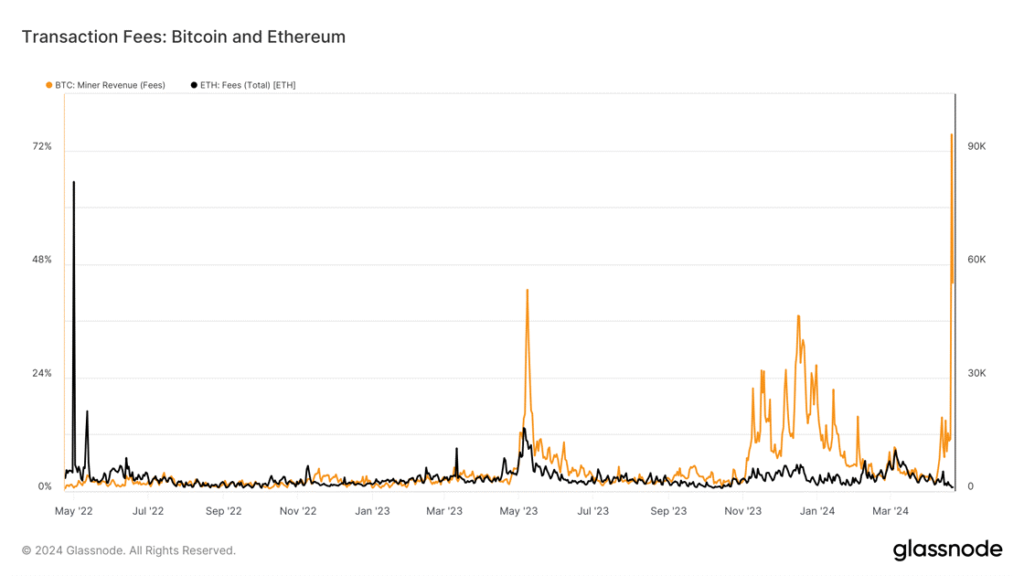
Source: Glassnode
The growth in transaction fees is appreciated even further, especially when we examine miner behavior following the halving event. Miners are now less motivated to immediately liquidate their freshly acquired BTC, as they can capitalize on an additional revenue stream apart from block rewards.
Let’s zoom in on miner activity after the halving. About 50 BTC were sold on centralized exchanges on April 20, which doesn’t compare to the sell-off of March 5 when approximately 1,154 BTC were sent to exchanges, pulling the asset to ~$64K, down from ~$68K, as shown in the chart below. The recent sale also doesn’t compare to the 307 BTC sold on the day following the previous halving in May 2020, when the asset was trading just below $9K.
Figure 6 – Transfer Volume from Bitcoin Miners to Exchanges in BTC (YTD)
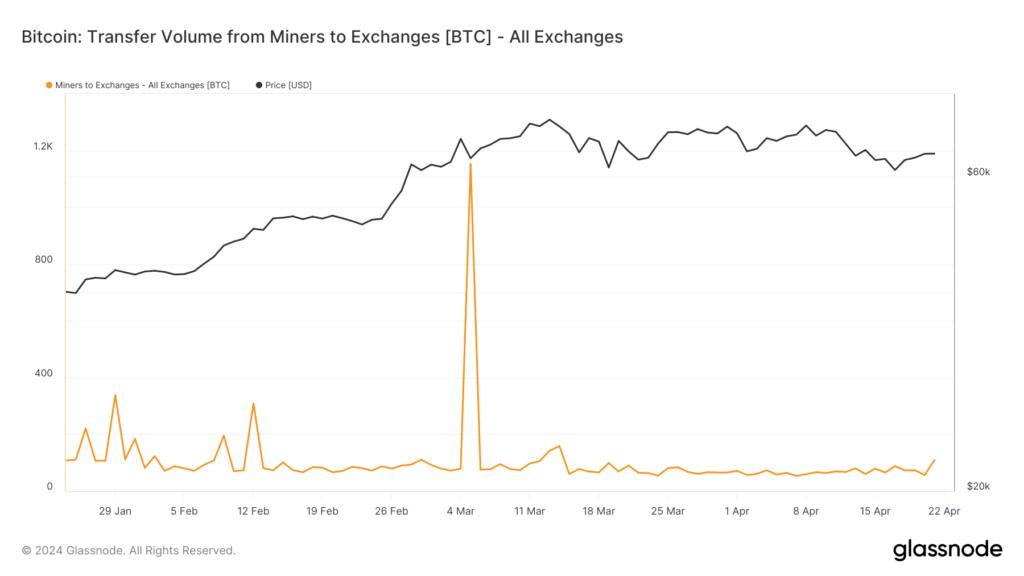
Source: Glassnode
The rising importance of Ordinal inscription, akin to non fungible tokens (NFTs), can be seen with Bitcoin generating $475M in real NFT sales versus Ethereum, which helps miners rake in more revenue and become sustainable. That said, the growing adoption of the Runes protocol is expected to drive even more activity toward the miners over the coming months.
Runes Protocol and Bitcoin’s Evergrowing Ecosystem
To recap, Runes streamlines the creation and management of fungible tokens on top of Bitcoin. It addresses the inefficiencies of the BRC20 standard, which have burdened the Bitcoin blockchain due to its inefficient data handling approach. That said, Runes achieves this in two key ways. Firstly, it optimizes transaction fees by consolidating multiple Unspent Transaction Output (UTXO) transactions into one bundle, leveraging Bitcoin’s accounting UTXO model. Additionally, it utilizes Bitcoin’s script, OP_Return, to inscribe data directly onto the blockchain, which serves to assign and transfer Runes balances within the network’s UTXOs. By minimizing data usage to 80 bytes, compared to BRC20’s 4MB, Runes prevents unnecessary bloat on the Bitcoin blockchain.
Ultimately, Runes presents an innovation aimed at bolstering Bitcoin’s security budget, offering miners an alternative revenue source to reduce their dependence on Bitcoin’s subsidized rewards over the long term. In fact, miners have earned about 1,500 BTC, valued at close to $100M in less than three days of trading activity, as seen below in Figure 7. To that end, Runes has garnered widespread support from the outset, with multiple Tier 2 exchanges such as OKX and Gate.io already announcing the listing of early collections like UNCOMMON.GOODS and MEME.ECONOMICS, which were among the first collections minted. Additionally, Binance appears to be hinting at support for meme tokens like Wizard and Pups, which were also among the first tokens to migrate from the BRC20 to the Runes standard. Meanwhile, NFT platforms like Magic Eden and Bitcoin-focused wallet provider Unisat are also joining the trend to capitalize on Runes’ growing popularity.
Figure 7: Fees Paid by Users to Mint Tokens Using the New Runes Protocol
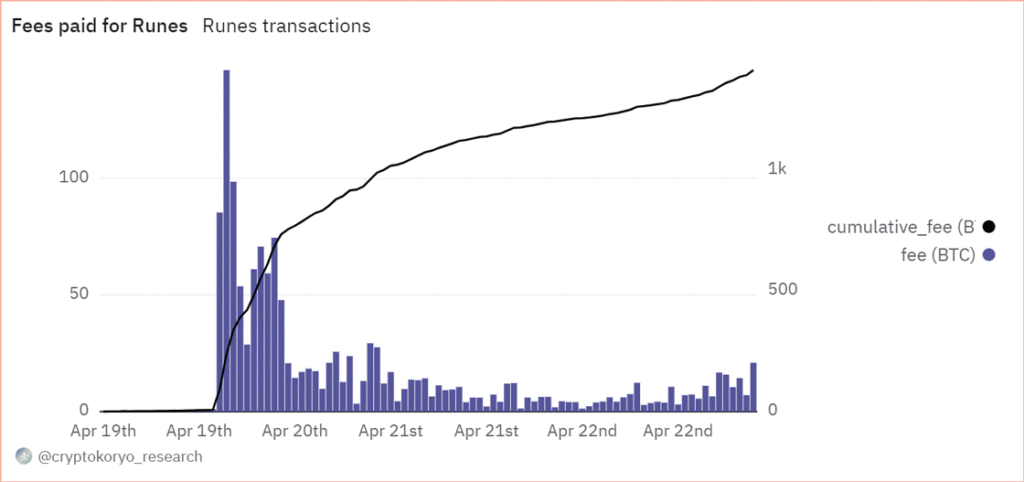
Source: CryptoKoryo on Dune
Following the pattern of past hype cycles, we anticipate that the initial excitement surrounding Runes will gradually subside, followed by a surge of heightened activity in the long run. This trend is often observed because the initial wave of interest tends to be on meme tokens, which can be quickly deployed and attract the masses’ attention, but often don’t add substantial value. However, as time progresses, sophisticated primitives like exchanges, automated market makers, and other DeFi lego blocks will begin emerging. These advancements will bolster Bitcoin’s capabilities at the application layer, streamlining the process of token trading on the Bitcoin network, much like ERC20/ERC721 did for Ethereum. In fact, when considering Bitcoin’s untapped market potential to establish its own fungible market ecosystem compared to other smart contract platforms, it becomes evident that there is substantial room for growth for this new generation of tokens, as illustrated in Figure 8 below.
Figure 8: The Market Opportunity for Bitcoin’s Fungible Tokens Ecosystem
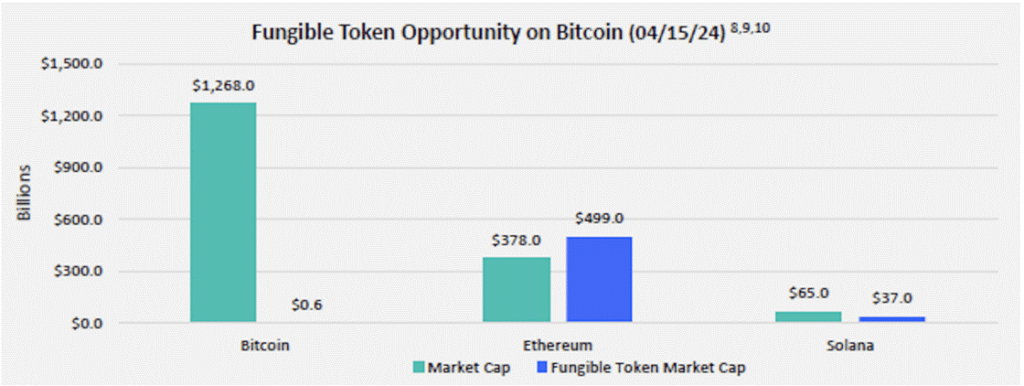
Source: FranklinTempleton
That said, Ordinals and Runes aren’t the only source of excitement pushing the boundaries of Bitcoin. For one, Bitcoin’s scaling solution Stacks began the first phase of its Nakamoto upgrade, called the instantiation stage, on April 22, while its final phase is expected to culminate by the end of May. As part of the upgrade, Stacks will introduce faster block processing times, enabling transactions to be finalized in under 5 seconds, a significant improvement from Bitcoin’s average of 10-30 minutes. Additionally, Stacks will leverage Bitcoin’s robust security guarantees, making transaction reversals on the Stacks network as challenging as those on the Bitcoin network. Furthermore, the upgrade will introduce a 1:1 BTC-backed asset (sBTC), enhancing the utility of Bitcoin by enabling its use across a diverse ecosystem of financial and gaming applications built on top of the scaling solution. The growing excitement surrounding its upgrade has pushed the total valued locked on the network to its highest point last week, reaching $170M.
On the other hand, there is a growing ecosystem of scaling solutions emerging on the back of BitVM, released last year. Standing for Bitcoin Virtual machine, this primitive is an operating system that allows for native smart-contract functionality on top of Bitcoin. It does so by introducing what’s known as a two-party provider verifier model that allows for complex computation to be executed off-chain, which can then be challenged on top of Bitcoin using fraud proofs, akin to how Arbitrum and Optimism function. To put it simply, BitVM enables Bitcoin to host more complex applications, which is giving birth to an embryonic L2 landscape, including Chainway, BitLayer, and Bob, amongst others, aiming to alleviate the issue of rising transaction costs. However, we will be closely monitoring this emerging sector, as there are numerous projects attempting to exploit the unprecedented enthusiasm for Bitcoin to launch potentially fraudulent protocols.
Bookmarks
Have you read our latest report, The Bitcoin Halving and Beyond? Click here to get a digital copy.
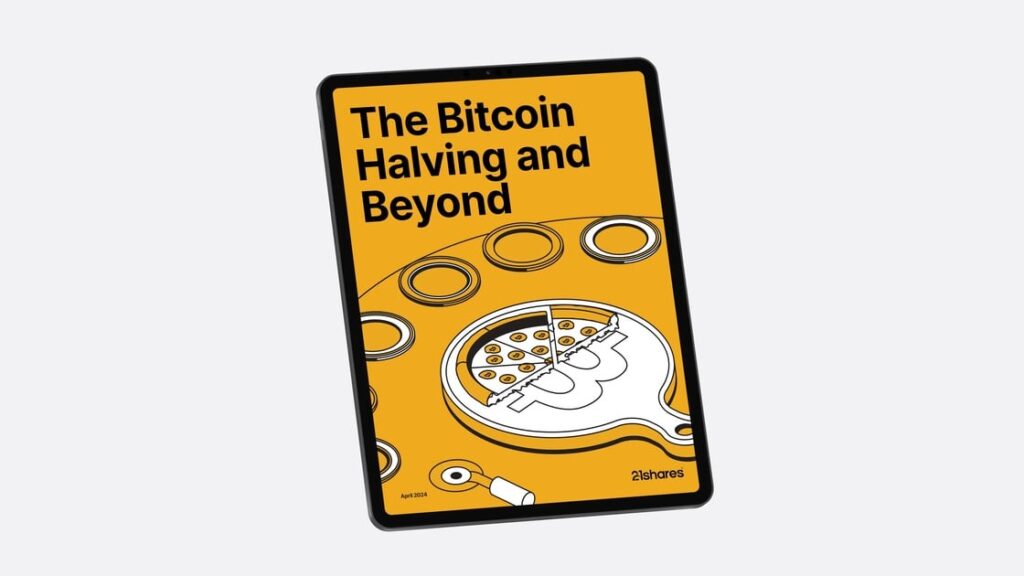
This Week’s Calendar
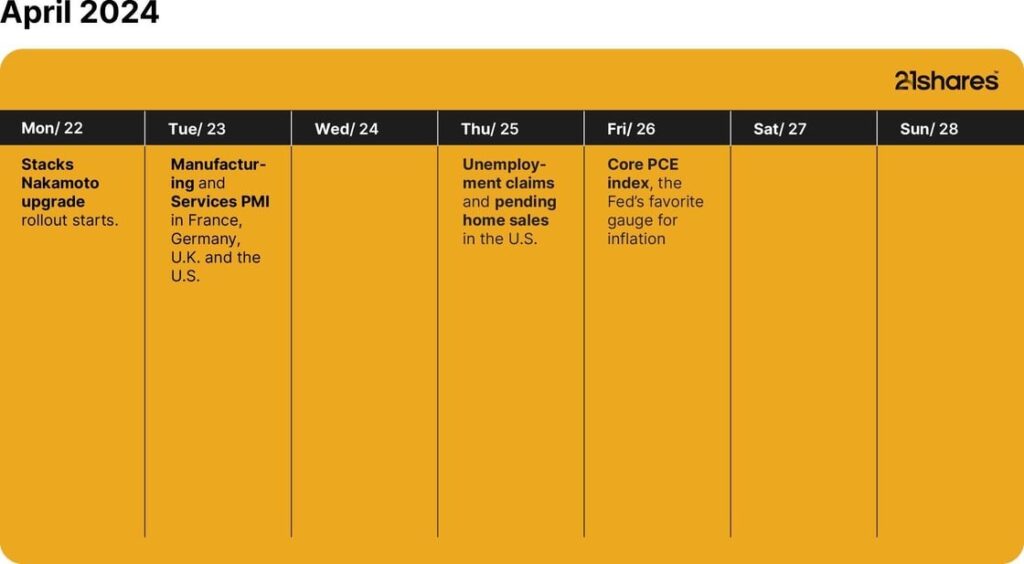
Source: Forex Factory, 21Shares
Research Newsletter
Each week the 21Shares Research team will publish our data-driven insights into the crypto asset world through this newsletter. Please direct any comments, questions, and words of feedback to research@21shares.com
Disclaimer
The information provided does not constitute a prospectus or other offering material and does not contain or constitute an offer to sell or a solicitation of any offer to buy securities in any jurisdiction. Some of the information published herein may contain forward-looking statements. Readers are cautioned that any such forward-looking statements are not guarantees of future performance and involve risks and uncertainties and that actual results may differ materially from those in the forward-looking statements as a result of various factors. The information contained herein may not be considered as economic, legal, tax or other advice and users are cautioned to base investment decisions or other decisions solely on the content hereof.
Nyheter
WisdomTree utökar sortimentet med US Quality Growth UCITS ETF (QGRW)
Publicerad
12 timmar sedanden
24 april, 2024
WisdomTree har igår lanserat WisdomTree US Quality Growth UCITS ETF (QGRW). QGRW strävar efter att spåra pris- och avkastningsutvecklingen, före avgifter och utgifter, för WisdomTree US Quality Growth UCITS Index (”Indexet”) och har en total kostnadskvot (TER) på 0,33 %. QGRW, som idag är noterat på Börse Xetra och Borsa Italiana, kommer att noteras på Londonbörsen den 24 april 2024.
Det proprietära indexet är utformat för att spåra resultatet för amerikanska storbolag med stark kvalitet (t.ex. hög lönsamhet) och tillväxtegenskaper som uppfyller WisdomTrees ESG-kriterier (miljö, social och styrning).
WisdomTrees tillvägagångssätt syftar till att ge högre uppåtdeltagande på tjurmarknader och generera positiv överavkastning över en hel marknadscykel. Tillväxtfaktorn syftar till att fånga företag som upplever tillväxt i försäljning, realiserade intäkter och förväntade intäkter, ofta inklusive disruptiva företag och tekniska jättar, vilket möjliggör större deltagande uppåt. Kvalitetsfaktorn ger stabilitet till en portfölj och hjälper till att filtrera bort de mest olönsamma, mycket spekulativa och lågkvalitativa namnen. Denna kombination positionerar WisdomTree US Quality Growth UCITS ETF som en strategisk, långsiktig aktielösning för investerare som letar efter genomtänkt exponering mot tillväxtsegmentet på den amerikanska aktiemarknaden utan att offra kvaliteten på sin portfölj.
Pierre Debru, chef för Quantitative Research & Multi Asset Solutions, WisdomTree, sa: ”Tillväxt tenderar att fånga störande och växande företag, vilket leder till högre allokering till tekniska jättar, men historisk avkastning tyder på att investeringar i tillväxtaktier utan filter kan vara en förlora spel på lång sikt. Att tillämpa en kvalitetsskärm på tillväxtaktier kan hjälpa till att säkerställa att portföljbolagen är sunda och kan leverera resultat över tid. Tillväxtaktier av hög kvalitet har historiskt sett varit bättre på att hjälpa investerare att klara avdrag än en ren tillväxtallokering utan att offra förmågan att delta i marknadsåterhämtning. Den nya ETF:n är ett alternativ till tillväxtstrategier som Nasdaq 100, eftersom den tar ett mer holistiskt tillvägagångssätt för portföljkonstruktion istället för att enbart fokusera på marknadsvärde för beståndsdelar eller deras börsnotering.”
Europeiska investerare kan nu få tillgång till QGRW, som redan är en tillgänglig strategi i USA, som initialt lanserades 2022. WisdomTree US Quality Growth UCITS ETF kommer att ansluta sig till WisdomTrees sortiment av 360 miljoner USD av Quality Growth ETFer.
Genom WisdomTree US Quality Growth UCITS ETF kan investerare fortsätta att dra nytta av WisdomTrees stilkonsekventa, transparenta och systematiska investeringsprocess med rötter i akademiskt driven forskning.
Alexis Marinof, Europachef, WisdomTree, tillade: ”Sedan WisdomTree grundades har vi fokuserat på att lansera differentierade och mervärdesinvesteringslösningar för våra kunder. Kärnan i vår aktiefilosofi är tron att kvalitetsaktier bör vara hörnstenen i varje aktieportfölj. De är avgörande för att bygga motståndskraftiga portföljer som kan hjälpa investerare att bygga upp välstånd på lång sikt och navigera i de oundvikliga stormarna. Vi vet att investerare positionerar portföljer för att dra nytta av de kommande räntesänkningarna i USA, vilket förväntas bli en positiv katalysator för tillväxtorienterade amerikanska aktier. Men som vi har sett de senaste åren utlovas ingenting på finansmarknaderna. Så, genom att fokusera på kvalitet snarare än börsvärde, kan investerare dra nytta av ett mer robust tillvägagångssätt än marknadsvärdevägda tillväxtfonder, utan att offra avkastningen på uppåtgående marknader.”
ETF information
| Namn | Avgift | Börs | Valuta | Kortnamn | ISIN |
| WisdomTree US Quality Growth UCITS ETF – USD Acc | 0.33% | London Stock Exchange | USD | QGRW | IE000YGEAK03 |
| WisdomTree US Quality Growth UCITS ETF – USD Acc | 0.33% | London Stock Exchange | GBx | QGRP | IE000YGEAK03 |
| WisdomTree US Quality Growth UCITS ETF – USD Acc | 0.33% | Borsa Italiana | EUR | QGRW | IE000YGEAK03 |
| WisdomTree US Quality Growth UCITS ETF – USD Acc | 0.33% | Börse Xetra | EUR | QGRW | IE000YGEAK03 |

Tillgång till italienska statsobligationer med fast löptid

Navigating Macro Headwinds, On-Chain Optics, and The Rise of Runes

WisdomTree utökar sortimentet med US Quality Growth UCITS ETF (QGRW)

SJPD ETF köper alla slags japanska aktier

Franklin Templeton lanserar ny fond som följer katolska principer

ETFmarknaden i Europa firar sitt 24-årsjubileum med tillgångar på två biljoner USD

De mest populära börshandlade fonderna mars 2024

3 ETF:er du nog inte visste finns

FUIG ETF investerar i hållbara företagsobligationer som följer Parisavtalet

Tillgång till obligationsmarknaden för företagsobligationer från utvecklade marknader
Populära
-

 Nyheter1 vecka sedan
Nyheter1 vecka sedanETFmarknaden i Europa firar sitt 24-årsjubileum med tillgångar på två biljoner USD
-

 Nyheter4 veckor sedan
Nyheter4 veckor sedanDe mest populära börshandlade fonderna mars 2024
-

 Nyheter4 veckor sedan
Nyheter4 veckor sedan3 ETF:er du nog inte visste finns
-

 Nyheter3 veckor sedan
Nyheter3 veckor sedanFUIG ETF investerar i hållbara företagsobligationer som följer Parisavtalet
-

 Nyheter1 vecka sedan
Nyheter1 vecka sedanTillgång till obligationsmarknaden för företagsobligationer från utvecklade marknader
-

 Nyheter2 veckor sedan
Nyheter2 veckor sedanFörsvarsfond når förvaltad volym på 500 MUSD
-
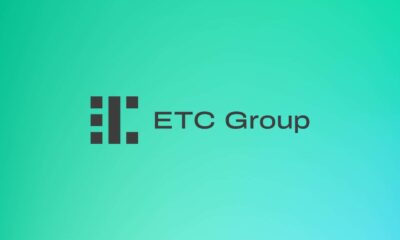
 Nyheter3 veckor sedan
Nyheter3 veckor sedanVad händer härnäst för Bitcoin?
-

 Nyheter3 veckor sedan
Nyheter3 veckor sedanNy börshandlad fond från Deka ger tillgång till S&P 500-index



